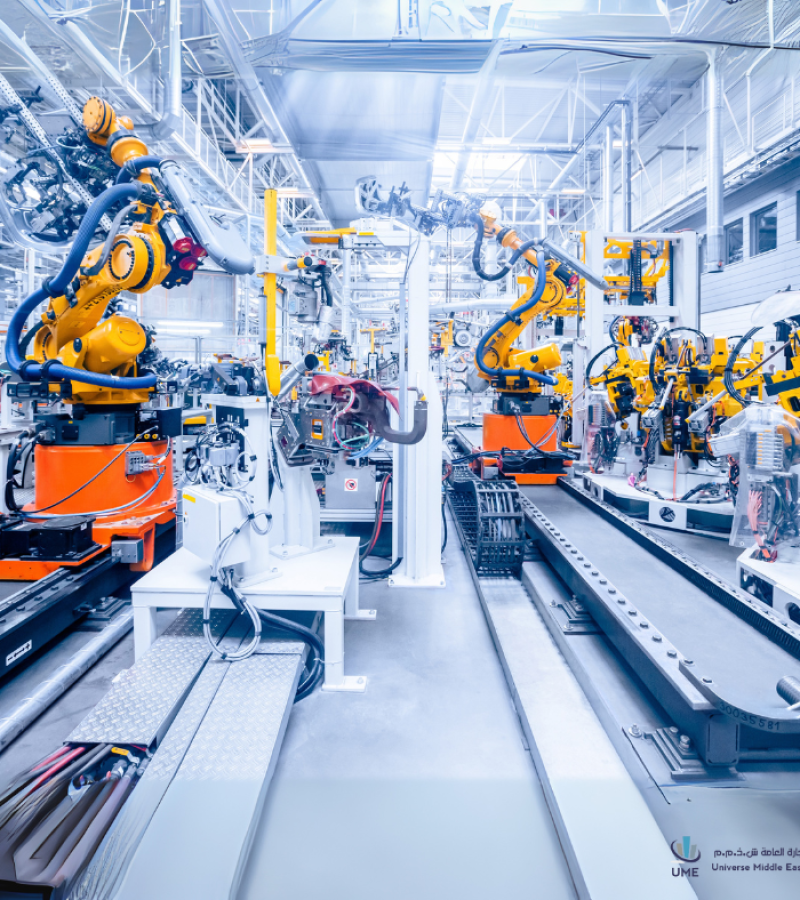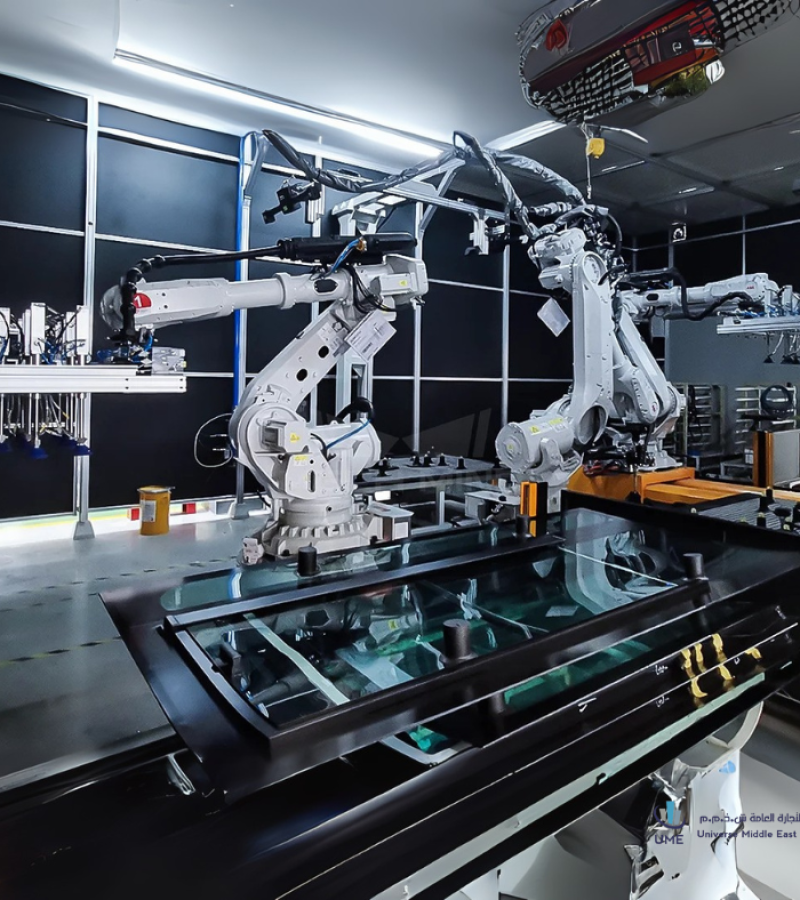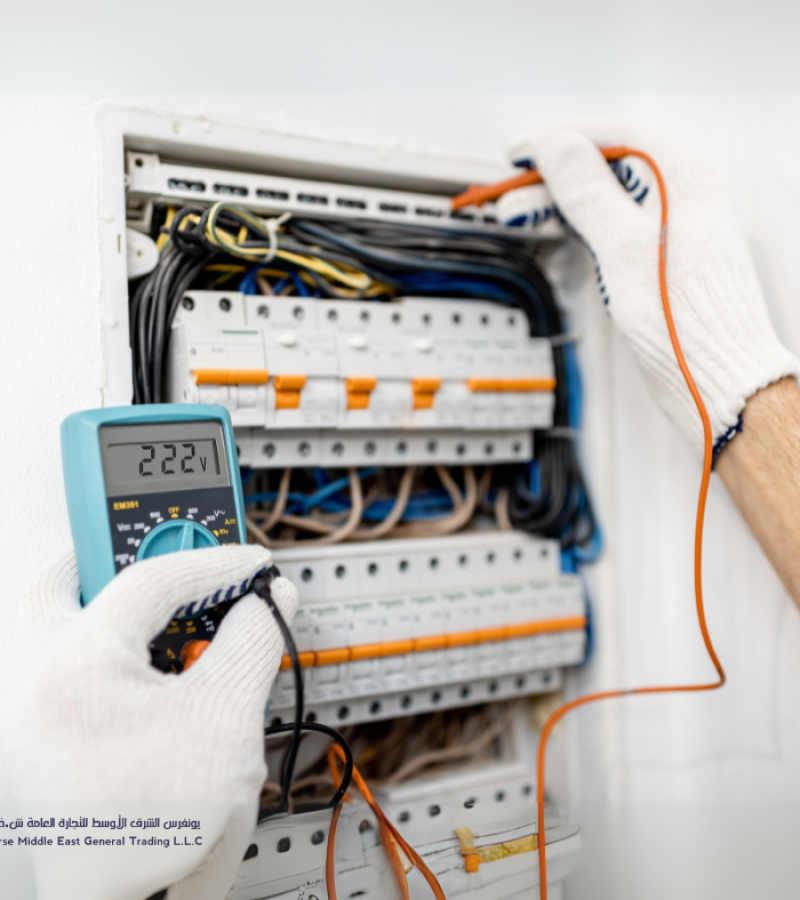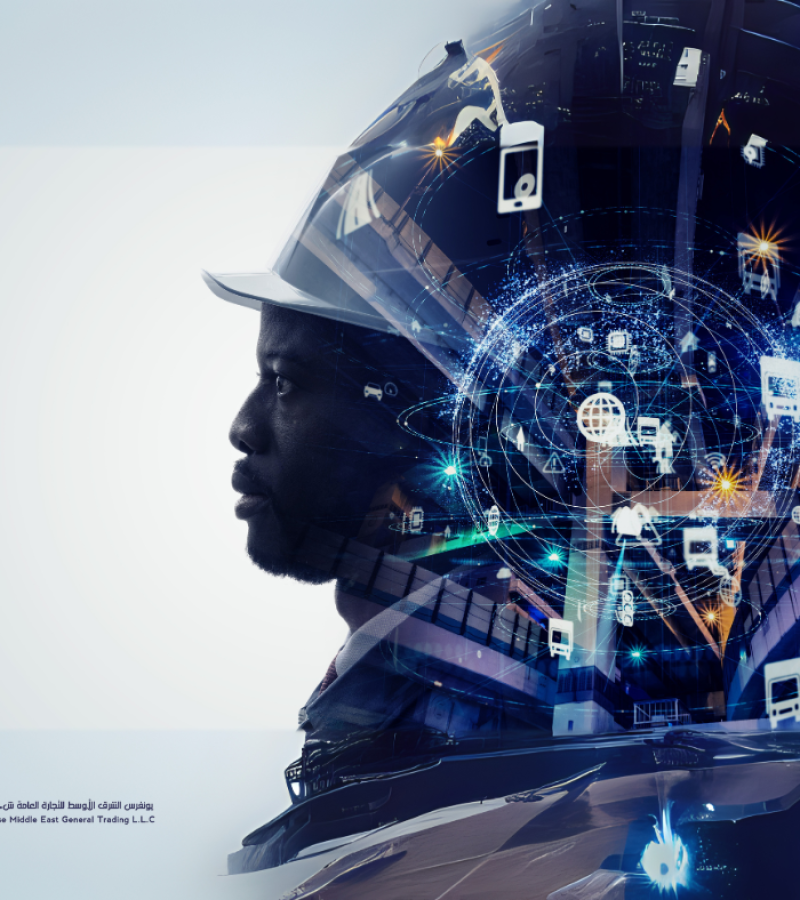How Industrial PCs and Displays Revolutionize Modern Manufacturing
Home > Blog > Blog Details

How Industrial PCs and Displays Revolutionize Modern Manufacturing
October 3, 2024
Introduction
In today’s industrial landscape, efficiency and automation are paramount. Industrial PCs (IPCs) and specialized displays play a crucial role in modernizing manufacturing processes. Unlike consumer-grade systems, these devices are designed to withstand harsh environments, ensuring uninterrupted operations.
Key Features of Industrial PCs
- Rugged Design: Resistant to dust, heat, moisture, and shock.
- Performance Under Pressure: Handle data-intensive processes and critical applications in real time.
- Customizable: Can be tailored to fit unique requirements, such as specific CPU or I/O configurations.
Use Cases Across Industries
- Oil & Gas: Monitor drilling operations and ensure system integrity in remote locations.
- Food Processing: Automate production lines and ensure hygiene through touch-free interfaces.
- Pharmaceuticals: Maintain stringent environmental controls with real-time data visualization.
Role of Industrial Displays & Monitors
- Touchscreen Interfaces: Enable operators to interact with machinery effortlessly.
- Real-time Monitoring: Displays provide instant feedback on processes, improving decision-making.
- Durability: Operate reliably in extreme environments, such as factories or outdoor installations.
Integrating with IoT for Industry 4.0
IPCs and industrial displays are integral to the rise of Industry 4.0. They enable seamless connectivity with sensors, cloud platforms, and remote monitoring systems, optimizing production and reducing downtime.
More Blogs
Introduction
Industrial automation is transforming the UAE’s manufacturing and industrial sectors. From Dubai to Abu Dhabi, factories are investing in smart solutions to increase productivity, improve energy efficiency, and maintain global competitiveness. In this case study, we look at how UAE factories are leveraging automation products from Siemens, Schneider Electric, and other global leaders to achieve measurable success.
Case Study 1: Food & Beverage Factory in Dubai
Challenge: High energy costs and manual monitoring slowed down production.
Solution: Implemented Siemens SIPART PS2 positioners and Schneider PLC-based automation for process control.
Result:
-
18% reduction in energy consumption
-
22% faster production cycle
-
Improved safety compliance
Case Study 2: Cement Plant in Abu Dhabi
Challenge: Frequent downtime due to manual system faults.
Solution: Upgraded to SCADA-based monitoring and remote automation systems with predictive maintenance.
Result:
-
Reduced downtime by 30%
-
Extended equipment lifespan
-
Enhanced real-time monitoring
Case Study 3: Automotive Components Manufacturer in Sharjah
Challenge: Quality control inconsistencies in assembly lines.
Solution: Installed robotic automation systems integrated with AI-powered quality inspection.
Result:
-
40% fewer defects
-
25% increase in production capacity
-
Enhanced export competitiveness
Conclusion
Industrial automation is no longer optional for UAE factories — it’s a necessity. Companies that invest in automation benefit from higher productivity, lower costs, and long-term sustainability. With solutions from Siemens, Schneider Electric, and other global leaders, UAE industries are setting benchmarks in smart manufacturing.
To view our page- https://universemiddleeast.com/products/
In the hot and demanding climate of the United Arab Emirates, reliable cooling is essential for industries, data centers, and HVAC systems. The ebm-papst 4650N axial fan is designed with German precision to provide long-lasting, energy-efficient airflow solutions for businesses across Dubai, Abu Dhabi, Sharjah, and the wider UAE.
🔧 Technical Specifications – 4650N Fan
- Model: 4650N
- Dimensions: 119 × 119 × 25 mm
- Voltage: 230 V AC
- Airflow: ~110 m³/h
- Speed: 2650 RPM
- Noise: ~39 dB(A)
- Bearing: Ball bearing
🌍 Applications in UAE
- Electrical panels in industrial automation
- HVAC and refrigeration systems in Dubai buildings
- Data centers and IT cooling in Abu Dhabi
- Control cabinets and energy projects across the UAE
✅ Why UAE Businesses Choose 4650N
- Handles high ambient temperatures common in UAE
- Compact yet powerful airflow
- Reduced energy consumption
- Backed by local distributors in UAE for faster delivery
👉 Contact us today to buy the ebm-papst 4650N axial fan in UAE with fast shipping and competitive pricing.
To view our page – https://universemiddleeast.com/product/fans/
In today’s fast-evolving industrial landscape, automation is no longer a luxury — it’s a necessity. Businesses in the UAE are rapidly embracing industrial automation solutions to enhance productivity, ensure safety, and reduce downtime. Whether you’re in manufacturing, oil & gas, HVAC, or logistics, having the right automation products is essential for your success.
At Universe Middle East, we supply a wide range of high-quality industrial automation components that meet the region’s demanding standards. Here are some must-have automation products for UAE-based facilities:
1. Programmable Logic Controllers (PLCs)
PLCs are the heart of any automated system. They offer robust control over processes, machinery, and systems, ensuring smooth operations across various industries in the UAE.
Popular Brands: Omron, Allen Bradley, Siemens
Applications: Factory automation, conveyor systems, packaging lines
2. Human Machine Interfaces (HMIs)
HMIs allow operators to interact with machinery efficiently. With intuitive interfaces, they help minimize errors and improve real-time decision-making.
Applications: HVAC systems, water treatment plants, production facilities
3. Variable Frequency Drives (VFDs)
VFDs help in energy saving by adjusting motor speed based on demand. In the UAE’s energy-conscious industries, these drives play a major role in cost control.
Applications: Pumps, fans, compressors, and elevators
4. Sensors & Encoders
For any automated process to work seamlessly, accurate data input is crucial. Sensors and encoders help detect position, proximity, temperature, and more.
Applications: Robotics, industrial ovens, assembly lines
5. Contactors & Relays
These are essential for switching and protecting electrical circuits. Their reliability directly impacts your system’s safety and longevity.
Applications: Control panels, lighting systems, motor control
6. Miniature Circuit Breakers (MCBs) & Molded Case Circuit Breakers (MCCBs)
Protect your systems from overloads and short circuits with high-quality MCBs and MCCBs, suitable for harsh UAE conditions.
Applications: Electrical distribution, automation panels
7. Cooling Fans (e.g., EBM Papst Industrial Fans)
Effective control panel cooling is critical in the UAE’s hot climate. German-engineered fans like EBM Papst ensure optimal temperature control and system longevity.
Applications: HVAC, electrical enclosures, drives, and inverters
📦 Why Choose Universe Middle East?
✔️ Authorized supplier of leading brands
✔️ Ready stock available in UAE
✔️ Fast dispatch and local support
✔️ Bulk and urgent orders accepted
🌐 Visit Us: www.universemiddleeast.com
🔧 Upgrade your facility with premium automation products tailored for the UAE’s industrial demands.
In the rapidly advancing industrial landscape of the UAE, companies are seeking reliable automation partners who can deliver quality, speed, and technical expertise. That’s where Universe Middle East stands out. As a trusted supplier of industrial automation products, we’ve become the preferred choice for engineers, technicians, and procurement teams across the Emirates.
1. Wide Range of Industrial Automation Products
We supply everything from control panels, sensors, relays, timers, contactors, PLCs, MCBs, MCCBs, cooling fans, and much more. Our extensive catalog ensures that clients across various industries — from HVAC to manufacturing — can find all their automation needs in one place.
2. Fast Delivery Across the UAE
We understand the urgency in industrial projects. That’s why we maintain ready stock and offer fast dispatch from our UAE warehouse, minimizing project delays and keeping your operations running smoothly.
3. Authentic Products You Can Trust
We only deal in original, high-quality industrial automation products. Whether it’s panel accessories, control systems, or cooling solutions, every item is thoroughly tested and backed by manufacturer standards.
4. Expertise You Can Rely On
Our technical team understands real-world industrial challenges. We assist customers in choosing the right products, offering tailored recommendations that save time and money.
5. Strong After-Sales Support
Universe Middle East doesn’t just sell products — we build partnerships. Our responsive customer service ensures that you’re supported even after your purchase.
✅ Based in Dubai | Serving All Emirates
Visit us: www.universemiddleeast.com
With the UAE emerging as a hub for industrial growth, smart factories, and advanced infrastructure, the demand for industrial automation products is at an all-time high. Automation has become the key to streamlining operations, reducing downtime, and enhancing productivity across various sectors, from construction and energy to manufacturing and HVAC systems.
1. Why UAE Industries Need Automation
UAE industries operate in a competitive environment where efficiency and reliability are critical. Industrial automation products like controllers, sensors, drives, and advanced cooling systems help businesses reduce operational costs and optimize performance while maintaining high safety standards.
2. Key Benefits of Automation in UAE
a) Increased Efficiency and Output
Automation minimizes manual intervention, ensuring 24/7 operations with consistent productivity.
b) Cost Savings Through Energy Optimization
Modern automation systems help reduce energy waste, which is essential for UAE industries aiming for sustainable practices.
c) Real-Time Monitoring
Businesses can track equipment performance in real time, identifying potential issues before they become costly breakdowns.
d) Improved Workplace Safety
By automating hazardous tasks, companies reduce risks to employees, ensuring a safer industrial environment.
3. Universe Middle East – Your Trusted Automation Partner in UAE
Universe Middle East provides genuine and high-quality industrial automation products designed for HVAC, electrical panels, and factory automation systems. With ready stock and expert technical support, we help UAE industries enhance efficiency and reliability.
Products EBM Papst fans are known worldwide for their efficiency, durability, and German engineering. However, like any industrial equipment, proper maintenance is key to extending their lifespan and ensuring optimal performance. Whether they are used in HVAC systems, electrical panels, or automation projects across the UAE, these fans deserve regular care.
1. Regular Cleaning
Dust, sand, and debris can accumulate on the fan blades and motor.
-
Clean the blades and housing with a soft brush or compressed air.
-
Avoid harsh chemicals to prevent damage.
2. Check Bearings and Lubrication
The bearings in EBM Papst fans are designed for long life, but it’s important to check them periodically.
-
For ball-bearing fans, ensure they are not producing unusual noise.
-
For sleeve-bearing fans, follow recommended lubrication schedules.
3. Inspect Electrical Connections
Loose wiring or damaged connectors can affect fan efficiency.
-
Ensure all electrical connections are secure.
-
Use proper voltage and check for fluctuations.
4. Monitor Operating Conditions
High ambient temperatures, humidity, or excessive vibration can shorten the lifespan of fans.
-
Use protective grilles or filters if operating in dusty environments.
-
Install vibration dampers if required.
5. Replace Worn-Out Parts on Time
If the fan starts vibrating excessively or airflow is reduced, replace damaged blades or worn-out components promptly to avoid bigger failures.
Why Choose Universe Middle East for EBM Papst Fans?
We provide genuine EBM Papst fans with local stock, quick delivery, and expert support across the UAE. Our solutions help industries maintain reliable cooling and automation systems.







